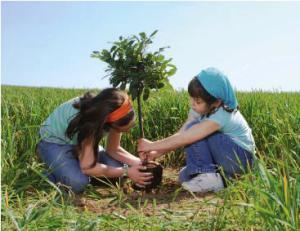 I don’t like to talk about my family online. Call me paranoid, but there are a lot of crazy people out there who don’t like what scientists like me are saying (bugger the evidence). Yes, like many climate scientists, I’ve also been threatened. That’s why my personal life remains anonymous to all except for select group of people.
I don’t like to talk about my family online. Call me paranoid, but there are a lot of crazy people out there who don’t like what scientists like me are saying (bugger the evidence). Yes, like many climate scientists, I’ve also been threatened. That’s why my personal life remains anonymous to all except for select group of people.
But I’ve mentioned my daughter before on this blog, and despite a few people insinuating that I am a bad parent because of what I said, I am happy that I made the point that climate change is a scary concept of which our children must at least be cognisant.
My daughter’s story today is a little less confronting, but equally enlightening. It’s also a little embarrassing as a scientist who has dedicated my entire research career to the discipline of conservation biology.
As a normal six year-old without the ability to refrain from talking – even for a moment – I hear a lot of stories. Many of them are of course fantastical and ridiculous, but those are just part of a healthy, imaginative childhood (I am proud to say though that she is quite clear about the non-existence of fictitious entities like faeries, easter bunnies and gods).
Every once in a while, however, there are snippets of wisdom that ooze out from the cracks in the dross. In the last few months, my daughter has independently and with no prompting from me come up with two pillars of conservation science: (i) protected areas and (ii) biodiversity corridors.
Of course, she didn’t use that nomenclature, but the concepts came through loud and clear nonetheless. As a contextual prologue, she has been fascinated with extinction for the last six months. She wants to know about every animal or plant that went extinct since the Ediacaran, what caused them to go extinct, and how important they were in the grand ecosystem scheme of things. Yes, this is obviously of prime interest to me, hence the subject at hand, but I’m amazed at how obsessed she is with the topic. When it comes to everything from the Late Pleistocene onward, the cause almost always comes down to humans, whether directly by exploitation, or indirectly through habitat loss or invasive species (or all of the above).
So having fully determined that the human race is largely responsible for extinctions, and that forest loss is one of the biggest contributors, she has it in her head to save the forests that remain. Her idea? Build a big fence around remaining forests and don’t let people in. Sounds a lot like ‘protected areas’ to me.
The second concept follows similar lines. Well, if you can plant trees (we have planted trees together on our property), then you can restore forests, right? Rather amazingly, she suggested that we should plant trees between existing forest fragments so that all the animals could “move back and forth between the forests and have more room”. Amazing.
Or is it? Like any parent, I’m convinced (without any corroborating evidence) that my child is a genius, but deep down I know that she’s rather normal. No – I don’t think she’s particularly brilliant to come up with these independently1; rather, I think these two bastions of conservation biology represent some of the lowest-hanging fruit in applied conservation.
In other words, these are perhaps some of the easiest and most mundane solutions to the biodiversity crisis. While we do our best to protect what’s there, clearly it isn’t working. For example, over half of tropical protected areas are still losing their biodiversity, and Australia’s largest national park is experiencing a pathetic collapse of its vertebrates. Add all this to our governments’ charge to remove protections of our national reserve system, and you can see that we have to do so very much more. Biodiversity corridors are another potential disaster if not done very, very carefully.
Happily, conservation ecologists are now talking a lot more about what to do between protected areas. We also have a lot of research going on about the most biodiversity-friendly ways of farming. We’re even talking about our need to generate biodiversity-friendly energy for our growing and power-hungry human population.
So we’re getting there, but it’s essential we do not spend all of our efforts on merely documenting the calamity. We need some real solutions and we need them quickly. Think laterally. Think transdisciplinarity. Think controversially.
CJA Bradshaw
1I am obliged to confess that my daughter is an only child, she has two scientists for parents, she spends substantial amounts of time watching David Attenborough documentaries, and she lives on a farm surrounded by forests and native animals. She’s therefore not entirely naïve about biodiversity or its problems.

